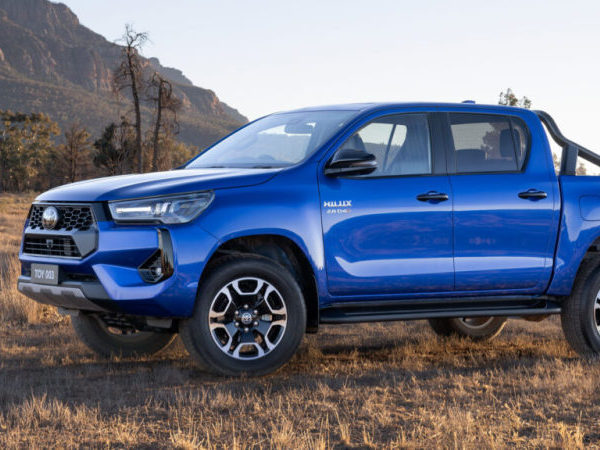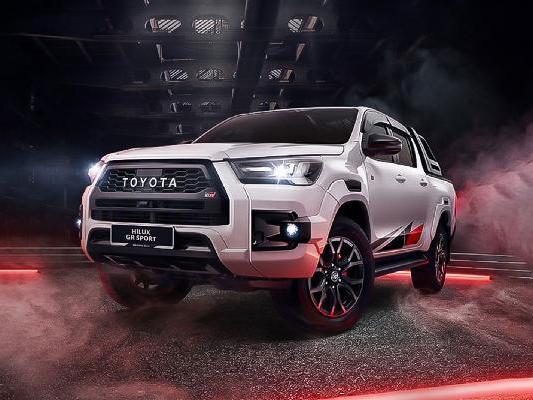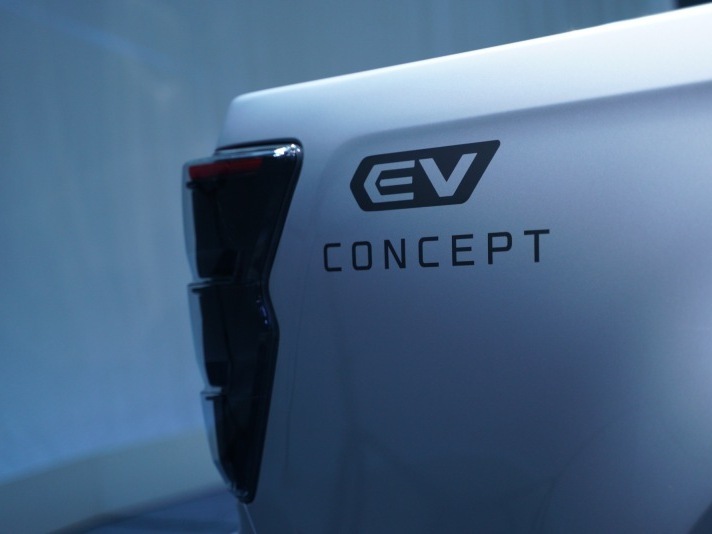Q
berapa harga toyota hilux
When it comes to Toyota Hilux pricing in Malaysia, the current range sits roughly between RM 92,880 and RM 146,880, depending on the variant and specs you go for. The exact figure fluctuates based on the body style—like Single Cab or Double Cab—the powertrain under the hood (2.4L vs. 2.8L diesel engines), and added features such as 4x4 capability or premium safety packages.
The Hilux is one of Malaysia’s top-selling pickups, and it’s easy to see why. Its reputation for toughness, generous ground clearance, and strong torque delivery makes it a hit with both commercial users and outdoor enthusiasts, especially handy for tackling the country’s varied terrain. If you’re thinking about picking one up, your best bet is to swing by an authorized dealer to get the latest quotes and check out any ongoing promotions. It’s also worth cross-shopping against rivals like the Mitsubishi Triton or Ford Ranger—each brings its own strengths in power and payload—but the Hilux stands out in Malaysia for its strong resale value and well-established after-sales network.
Another thing to note: For 2024, some Hilux variants might come standard with Toyota Safety Sense, which includes adaptive cruise control and lane-keeping assist. That’s a nice boost for on-road safety.
Special Disclaimer: This content is published by users and does not represent the views or position of PCauto.
Related Q&A
Q
What kind of maintenance does the 2018 Tacoma need?
The 2018 Toyota Tacoma is a tough-as-nails pickup, but here in Malaysia's tropical heat, it needs a little extra TLC to keep performing at its best. To tackle the high temps and humidity that can really take a toll on your engine, I'd recommend swapping out the oil and filter every 5,000 km or 6 months—make sure you're using full synthetic oil for maximum protection.
Transmission and transfer case fluids? Check those around the 40,000 km mark. The damp climate can break down fluids faster than you might expect. With all the rain we get, don't sleep on brake maintenance either: inspect brake pad thickness and brake fluid moisture levels every 20,000 km to avoid any drop-off in stopping power. And for that AC? Swap the cabin air filter every 10,000 km to keep the air inside fresh and clean.
Other things to keep an eye on: rubber bits under the chassis, like suspension bushings, can dry out and crack in the heat—give 'em a regular once-over. Also, make sure electrical connections are protected against rust. If you're driving coastal roads often, step up the undercarriage rust-proofing. That salty sea air loves to eat through metal.
Now, the Tacoma's body-on-frame setup is great for light off-roading, but if you've been hauling heavy loads regularly, it's a good idea to get a wheel alignment done. Prevents uneven tire wear, which saves you money in the long run. Nail these maintenance steps, and your Tacoma will keep chugging along strong, even in our harsh tropical conditions.
Q
Where are 2018 Tacomas built?
The 2018 Toyota Tacoma rolled off the lines at two main plants: the San Antonio facility in Texas, USA, and the Baja California plant in Mexico. Both are known for their top-notch production processes and quality control, which is why Tacomas have such a solid rep for reliability and toughness. For folks in Malaysia, even though the Tacoma isn't locally assembled, the versions brought in through official import channels are properly kitted out to handle the local conditions. Think tweaks like upgraded cooling systems and rust-proofing to deal with that hot, humid weather we get. As a poster child for midsize pickups, the Tacoma has a global fan base thanks to its off-road chops, hauling capacity, and how easy it is to mod. The 2018 model stepped things up with that 3.5L V6 paired to a 6-speed auto—good for both power and not guzzling fuel like crazy. If you're in Malaysia eyeing a used import, stick to the ones that came through legit channels. That way, you know the paperwork's all there and the service history is complete. And don't skip checking the undercarriage and 4WD system—these trucks really shine when you take them into those Southeast Asian jungle terrains.
Q
How much is the Hilux 2023 in the Philippines?
The 2023 Toyota Hilux in the Philippines has a price range that varies depending on the trim and configuration, roughly from 1,039,000 Philippine Pesos (around 86,000 Malaysian Ringgit) up to 1,813,000 Philippine Pesos (approximately 150,000 Malaysian Ringgit). Actual prices might fluctuate a bit due to dealer promotions or optional extras.
The Hilux, a classic pickup in Toyota's lineup, has always been a big hit in Southeast Asia. Its durability and off-road chops make it a perfect fit for the Philippines' diverse road conditions. For our Malaysian readers, while the Hilux is available locally, the Philippine-spec models might have some subtle differences. For instance, certain variants could see tweaks to engine displacement or suspension setups to better suit local market needs.
It's worth noting that the Hilux is produced in multiple global markets, so prices and specifications can vary quite a bit by region. If you're considering a cross-border purchase, your best bet is to hit up local dealerships directly for the latest scoop.
Beyond all that, pickup trucks are super practical in Southeast Asia – they handle cargo hauling and family trips with equal ease, and that's a big part of why the Hilux has maintained such strong sales figures over the years.
Q
How much is the 2023 Toyota Hilux GR Sport?
The 2023 Toyota Hilux GR Sport is officially priced at around RM155,900 in Malaysia (excluding insurance and registration fees). This is the high-performance variant of the Hilux lineup, packing a 2.8-liter turbocharged diesel engine that cranks out 201 horsepower and a meaty 500 Nm of peak torque. It also gets GR Sport-exclusive sport-tuned suspension, exterior body kit, and interior design touches, which really up the ante in terms of driving dynamics and visual appeal.
As a sport-focused pickup, the Hilux GR Sport doesn't just retain the standard model's legendary durability and off-road capability; it also benefits from GR's tweaks to sharpen up the on-road handling. It's a solid pick for folks who want both power and practicality. The Toyota Hilux has always been a top seller in Malaysia, and the GR Sport version just gives those buyers who crave a bit more personality and sportiness another compelling option.
On top of that, Toyota's service network is spread all over the country, so owners can easily get maintenance and support when they need it. If this truck's caught your eye, I'd definitely recommend heading down to your nearest Toyota showroom for a test drive to really feel what it's capable of and check out all the specs for yourself.
Q
What is the price of a 2023 Toyota Hilux?
The 2023 Toyota Hilux in Malaysia comes with a range of prices depending on the variant and specs. The base Single Cab starts at around RM93,000, while the Double Cab kicks off from RM104,000. If you're eyeing the top-tier GR Sport trim, you're looking at approximately RM149,000. Keep in mind, these figures might shift slightly based on your location, ongoing promotions, or any extra accessories you decide to add.
A bona fide legend in Toyota's lineup, the Hilux has built a solid fan base in Malaysia thanks to its reputation for toughness and versatility. It's right at home on both city streets and rural roads, and even handles light off-road adventures with ease. Under the hood, you'll find either a 2.4-liter or 2.8-liter turbo diesel engine, delivering plenty of torque for the job while keeping fuel efficiency in check.
In the local market, the Hilux goes head-to-head with rivals like the Mitsubishi Triton and Ford Ranger. When weighing your options, it's smart to factor in your budget, how you plan to use the truck, and the after-sales service network. My advice? Swing by an authorized Toyota dealer for a test drive—you’ll get the latest pricing, plus any exclusive deals they might be running.
Q
What kind of oil does a Toyota Hilux 2023 take?
For the 2023 Toyota Hilux in Malaysia, the recommended engine oil is typically a full synthetic that meets API SN or SP standards, with viscosity grades 5W-30 or 10W-30 being the go-to choices. Your final pick should really depend on your driving conditions and habits. Here in Malaysia's tropical heat, for instance, 10W-30 might offer better engine protection when temperatures spike. Toyota officially suggests changing the oil every 10,000 kilometers or 6 months, whichever comes first, to keep that engine running at its peak.
Also, keep an eye out for oils with the ILSAC GF-6 certification – these are formulated to boost fuel efficiency and keep carbon deposits in check. If you're often hauling heavy loads or doing long highway stretches, stepping up to a higher-performance full synthetic could be worth it for the extra wear protection. While you're at it with the regular oil changes, don't skip checking the oil filter to make sure it's doing its job properly – that helps extend the engine's lifespan too.
And a quick note for Hilux models with the turbo diesel engine: you'll need an oil that specifically meets diesel standards like ACEA C3 or JASO DL-1 to avoid any issues with the emission system. If you're ever in doubt, the owner's manual is your best friend, or just swing by a Toyota authorized service center for some expert advice.
Q
What size engine is in the Hilux 2023?
The 2023 Toyota Hilux caters to diverse Malaysian drivers with a solid range of engine options, and the real crowd-pleasers are the 2.4-liter and 2.8-liter turbo diesel mills. Both pack advanced common-rail direct injection and variable geometry turbochargers, striking a nice balance between fuel efficiency and gutsy performance. The 2.4L kicks out around 150 horsepower and a meaty 400 Nm of torque, while the 2.8L steps things up with roughly 204 hp and a whopping 500 Nm – perfect for folks who need that extra grunt for heavy loads or off-road adventures.
If you're more of a petrol person, there's also the 2.7-liter naturally aspirated gas engine, good for 166 hp and 245 Nm of torque. What really stands out here is how Toyota's legendary reliability and durability shine through with these engines. They've been put through the wringer to handle Malaysia's tricky mix of road conditions and weather, so you know they'll hold up.
So, for Malaysian buyers eyeing a Hilux, it all comes down to your daily grind and budget. Whether you're navigating city streets or heading off the beaten path, there's an engine option that'll keep you moving reliably.
Q
What is the fuel range of the Hilux 2023?
The fuel range of the 2023 Toyota Hilux varies depending on the specific model and driving conditions. Generally speaking, the version equipped with the 2.4 - liter turbo diesel engine can achieve a combined range of 800 to 1000 kilometers on a full tank (approximately 80 liters capacity). The 2.7 - liter petrol engine version has a slightly lower range, around 600 to 800 kilometers. Actual range will also be affected by payload, driving habits, and road conditions.
For Malaysian users, the diesel - powered Hilux is particularly popular. Its fuel efficiency makes it well - suited for long - distance drives and cargo - carrying requirements, and Malaysia's relatively lower diesel prices further reduce running costs. Additionally, the Hilux's fuel tank is designed with practicality in mind, with a conveniently located fuel filler, making it ideal for users who frequently commute between urban and suburban areas.
If you often drive in Malaysia's hilly or rural areas, the diesel version is worth considering. Not only does it offer longer range, but its high low - end torque characteristics also make it better suited for climbing hills and carrying heavy loads. It's important to note that regular maintenance and proper driving habits can effectively extend fuel range, such as avoiding sudden acceleration and maintaining proper tire pressure.
Q
How much is a 2023 Hilux?
The 2023 Toyota Hilux in Malaysia comes with a range of prices depending on the variant and specs. The entry-level Hilux Single Cab starts at around RM 92,880, while the top-of-the-line Hilux Rogue is priced close to RM 146,900. Keep in mind, these figures might vary slightly based on dealer promotions or optional extras you might add.
The Hilux is a total legend in Toyota's lineup and absolutely kills it in the Malaysian market. It's built tough, packs strong performance, and handles off-road like a champ—perfect for our country's diverse roads and how we actually use our trucks here. Under the hood, the 2023 Hilux rocks either a 2.4L or 2.8L turbo diesel engine, delivering that sweet low-end torque we all love plus decent fuel efficiency. And safety? It's got Toyota Safety Sense, which includes pre-collision warning and lane departure alert—all the good stuff to keep you safer behind the wheel.
If you're thinking about picking one up, your best bet is to hit up your nearest authorized Toyota dealer. They can hook you up with the latest pricing, set you up for a test drive, and help you compare specs across different trims to find the one that fits you best. Oh, and let's not forget—Hilux holds its value like a boss in the used car market, and long-term running costs are pretty reasonable. That's a big part of why so many Malaysians swear by it.
Q
What is the difference between 2.8 L and 3.0 L Hilux?
In Malaysia, there is no 3.0-liter variant of the Toyota Hilux; instead, the models available feature a 2.8-liter engine, such as the 2023 Hilux Double Cab 2.8 Rogue AT 4WD and the 2023 Toyota Hilux GR Sport 2.8 AT. Taking these two 2.8-liter variants as examples, they offer more powerful performance compared to the 2.4-liter models, with the 2.8-liter engine delivering a maximum power of 204 PS, while the 2.4-liter engine reaches a maximum power of 150 PS. Additionally, the 2.8-liter models provide a maximum torque of 500 N·m, compared to 400 N·m for the 2.4-liter variants.
In terms of features, some versions of the 2.8-liter models come equipped with more advanced active safety technologies, such as lane-keeping assist, lane departure warning systems, active braking/safety systems, and forward collision warning—some of which are not available on select 2.4-liter models. Furthermore, the 2.8-liter variants also offer enhanced comfort features, such as 8-way power-adjustable front seats and upgraded air conditioning systems in certain versions.
When it comes to pricing, the 2.8-liter models are priced higher, with the 2023 Hilux Double Cab 2.8 Rogue AT 4WD retailing for RM 158,880 and the 2023 Toyota Hilux GR Sport 2.8 AT costing RM 169,080, both of which exceed the prices of their 2.4-liter counterparts.
Latest Q&A
Q
Do all 2020 Honda Accords have remote start?
Some high-end variants of the 2020 Honda Accord in the Malaysian market do come with remote start, but it's not standard across all trims—it really depends on the specific model specs and optional packages. You'll usually find remote start on models equipped with the smart key system. With that, owners can fire up the engine from a distance using the key fob or a smartphone app, preheating or cooling the cabin beforehand. This feature is especially handy given Malaysia's hot climate. It's worth noting that using remote start might be subject to local regulations; for example, the engine typically shuts off automatically after 10-15 minutes for safety reasons. If your Accord doesn't have it as standard, some third-party workshops offer compliant installation services, but it's better to go through Honda's authorized service centers first to ensure compatibility with the electrical system. Accord configurations can vary between markets, so your best bet is to check the specific model specs on Honda Malaysia's official website or just reach out to a local dealer to confirm. For those curious about the tech behind it, remote start systems usually rely on RF signals or 4G networks these days. Modern models even integrate smart features like air conditioning setting memory. As vehicle connectivity tech advances, we can expect these remote control features to get even more sophisticated in the future.
Q
Can I start my 2020 Honda Accord from my phone?
The 2020 Honda Accord's higher trim models in Malaysia do offer remote engine start via smartphone, but you'll need the HondaLink app for that. With it, you can fire up the engine, pre-cool or pre-heat the cabin, and unlock the doors from around 50 meters away using Bluetooth or a network connection. Just keep in mind Malaysia's hot and humid weather can sometimes mess with phone signal, so it's a good idea to park where the network coverage is strong. Also, this feature requires the car to have the smart key system and a subscription to the relevant service. The functions might vary between different model years and configurations of the Accord. Malaysian owners can check if their vehicle supports this by looking for a remote start button on the left side of the steering wheel or by consulting their local Honda dealer. Similar smartphone remote control technologies are becoming more common these days, with brands like Toyota offering Toyota Remote Connect and Nissan providing NissanConnect. However, the specific range of functions and subscription costs can differ depending on the market and the model. It's advisable to thoroughly review the configuration list before purchasing a car.
Q
How much does it cost to insure a 2020 Honda Accord?
In Malaysia, insurance costs for a 2020 Honda Accord can vary based on several factors, including the car's market value, engine capacity, the owner's age, driving record, and the type of insurance chosen. Generally speaking, annual premiums for Comprehensive Insurance range from around RM2,500 to RM4,500, while Third-Party Insurance is much cheaper, typically costing between RM1,000 and RM2,000. It's worth noting that insurance prices are also influenced by insurance company promotions; for example, a No Claim Discount (NCD) can significantly reduce premiums, with savings of up to 55%. Additionally, Malaysia's insurance market offers add-on coverage options like special natural disaster insurance or road rescue services, which will increase the total premium. It's advisable for car owners to compare quotes from multiple insurance companies before purchasing and consult with professionals to ensure they select the insurance plan that best fits their needs.
Q
How much is my 2020 Honda Accord worth?
Based on the Malaysian used car market, a 2020 Honda Accord is currently valued between RM110,000 and RM140,000. The exact price depends on factors like condition, mileage, trim level, and service history. For example, the higher-spec 2.0L Turbo holds its value better than the 1.5L Turbo, and cars with under 50,000 km and full original service records usually sell for 5% to 10% more.
The Honda Accord is a popular mid-size sedan among Malaysian buyers, known for its reliable performance, spacious interior, and good fuel economy—keeping demand steady in the used market. The 2020 model’s Honda Sensing safety suite has only boosted its appeal. If you’re selling, start by getting accurate quotes from online used car platforms or professional valuation services. Make sure the car’s exterior and mechanicals are in good shape to fetch a better price. Also, checking the used prices of rivals like the Toyota Camry or Mazda 6 from the same year will help you set a more realistic price.
Q
How much is a new battery for a 2020 Honda Accord?
The price of a new battery for the 2020 Honda Accord in Malaysia ranges from approximately RM500 to RM1500. The exact cost depends on the battery type, brand, and where you get it replaced. Original equipment (OE) batteries are usually more expensive but come with a warranty, while third-party brands like Panasonic, Amaron, or Bosch might offer better value for money. Malaysia's hot and humid climate takes a toll on battery life, so it's advisable to choose batteries with good high-temperature resistance, such as AGM (Absorbent Glass Mat) or EFB (Enhanced Flooded Battery) types. These are more suitable for vehicles equipped with start-stop systems. Additionally, regularly checking the battery condition and ensuring the charging system is functioning properly can also extend the battery's lifespan. For a more accurate quote, it's recommended to contact an authorized Honda service center or a reputable car repair shop directly; they can provide more detailed advice based on your specific vehicle model and needs.
View MoreRelated News

There is news that the next-generation Toyota Hilux will be released in November, bringing a major redesign.
MichaelSep 28, 2025

2026 Toyota Hilux Interior Unveiled, and It’s Giving Prado Vibes
JohnAug 6, 2025

All-New 2025 Toyota Hilux Coming Soon: Here's What to Expect
JamesJun 24, 2025

Toyota Hilux: A Buying Guide to Help You Choose the Right Model
MichaelMar 25, 2025

Reasons Why Pickups and SUVs Are Not Suitable for Electric Drive, Industry Secrets You Must Know Before Buying
JamesFeb 14, 2025
View More


















Pros
Cons